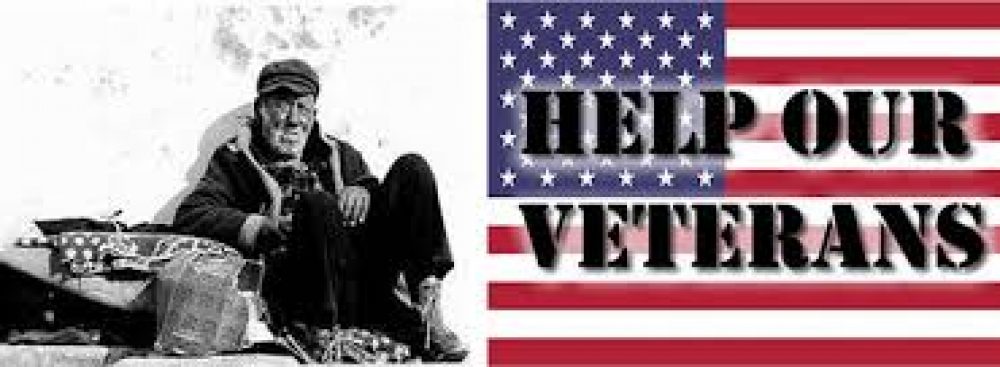
It makes sense to use some land already controlled by the U.S. Department of Veteran Affairs (VA) to build apartments for use by veterans. And it seems to be a nice bit of cooperation among the VA, CORE Affordable Housing, and the City of Menlo Park. Housing costs in this area are among the highest in the U.S. The 60 units include studio and one-bedroom apartments, with rent ranging from $574 to $792. These rates would permit people to live close to their work; many people have to commute an hour or more to find rentals at these levels. Presumably homeless people do not have regular jobs, so they need help paying the rent, for which there are several federal programs, such as those from the Department of Veteran Affairs and private programs such as those from Volunteers of America. Truly homeless or at-risk people may also need help finding jobs or getting enough training or education to qualify for those jobs. But that is another story.
Author Archives: admin
Starbucks CEO A Big Supporter of Veterans
 Howard Schultz is putting his money and time where his mouth is, according to The New York Times columnist Maureen Dowd. Unlike what appears to be a fairly large group of self-serving veterans charities, he and Starbucks are doing a lot to raise the consciousness of the rest of us (i.a., via co-sponsoring a free Concert for Valor on the Mall on Veterans Day and co-authoring a book with Rajiv Chandrasekaran (a Washington Post war correspondent) “For Love of Country: What our veterans can teach us about citizenship, heroism, and sacrifice”) and pledging to hire10,000 veterans during a five-year period.
Howard Schultz is putting his money and time where his mouth is, according to The New York Times columnist Maureen Dowd. Unlike what appears to be a fairly large group of self-serving veterans charities, he and Starbucks are doing a lot to raise the consciousness of the rest of us (i.a., via co-sponsoring a free Concert for Valor on the Mall on Veterans Day and co-authoring a book with Rajiv Chandrasekaran (a Washington Post war correspondent) “For Love of Country: What our veterans can teach us about citizenship, heroism, and sacrifice”) and pledging to hire10,000 veterans during a five-year period.
Stanford Business School Trains Veterans in Entrepreneurship and Innovation
Getting killed in a military action is one way men die young. But most servicemen don’t get killed in action. They come back as veterans, and once they have overcome any injuries, both physical and mental, they need to get some education or training, and pursue a job or profession. Not everyone can go to an institution as highly ranked as Stanford University, but it is refreshing to see Stanford’s Graduate School of Business (GSB) lend a helping hand. Among the GSB’s specialized student clubs is one for veterans, and during 2014 the GSB worked with the U.S. Special Operations Command Care Coalition and the COMMIT Foundation to offer its Stanford Ignite (an immersive certificate program for entrepreneurship and innovation) to post-9/11 veterans at the GSB for the first time. On Veterans Day, 2014 Stanford’s FM radio station aired interviews by Labiba Boyd with two of these veterans and one of its most famous earlier graduates, Nike founder Phil Knight (who volunteered for the Army just prior to his GSB studies).
Decline in Qualified Military Enlistee Volumes Puts Further Pressure on Taking Care of Returning Veterans
The armed forces have long been a default choice for young adults who aren’t prepared for, or cannot choose, a different occupation. One of the more unusual enlistees, author Tom Robbins, explains his reasoning in his new autobiography, Tibetan Peach Pie: “Why? – one might fairly ask. Well, for precisely the same reason the 90 percent of all enlistees join the military, which is to say, I was at a point in my life when I didn’t know what else to do.” Unfortunately, the number of qualified enlistees continues to decline because so many (71%) of the 34 million 17-24-year-olds in the U.S. don’t meet the basic standards of education, fitness (many are very obese), and absence of visible tattoos, according to The Wall Street Journal. The tattoo requirement is because not only do these youths have to be able to fight but also they have to look good in uniform. This seems like a frivolous requirement when put into the perspective of their fellow soldiers who have been physically injured or mentally traumatized in actual combat. And with the increasing number of injured/traumatized vets not being properly cared for these days, and thus not willing or able to re-enlist, the U.S. military is going to be hard-pressed to defend our country.
Risky Jobs Beyond the Military
Men do the great majority of the risky jobs, partly because they are on average bigger and stronger than women, and partly because of their hormones and societal expectations. And they get killed or injured in much greater numbers accordingly. Men were a dozen times as likely to be killed on the job during 2012 as women, according to this ranking from Forbes Magazine.
The exact ranking of the riskiest professions varies somewhat from Forbes to AOL, but the top two on both lists are fisherman and loggers. Aircraft pilots and flight engineers are third. Not surprisingly, structural iron and steel workers and roofers are high (no pun intended) on both lists. Surprisingly, farmers and ranchers are in the top ten, but firemen are not.
Given the riskiness, most of the jobs do not pay very well. Perhaps there is a lot of psychic income, as some of the jobs are pretty macho. But they’re still risky.
U.S. Military Casualties
Serving in the military in an active combat zone puts young men in harm’s way. The
number of U.S. casualties from wars starting with the Revolutionary War (an estimated
25,000) through the current “War on Terror”–Afganistan and Iraq combined–(5,200)
is well documented. Actually, the Civil War (625,000 casualties) was the bloodiest,
though only 213,000 were attributed to combat itself.
Wars were always bloody, but today’s are nastier than ever due to the variety of
weapons and the fanaticism of the enemies motivated by extreme religions (e.g.,
suicide bombers). Actually, the number of deaths in the current War on Terror
(Afganistan and Iraq combined) has been relatively small, but the number of wounded
is nearly eight times the number of deaths, which serves as a constant reminder that
likely discourages enlistment. And while it is hard to prove it conclusively, today’s
wounded veterans may be less proud of serving their country than earlier wars’ veterans.
There have been relatively few American women killed in combat throughout history, though it has increased in recent years. The total of 143 as of April 1, 2013 is small relative to men. So it continues to be predominantly young men who die young.


